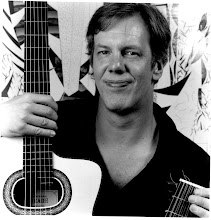
The First Generation of Jazz Guitarists: Charlie Christian, the First Electric Guitar Jazz Soloist
Charlie Christian was born in 1916 in
By the time Christian was twenty, he was performing throughout the Midwest, traveling as far as
Benny Goodman played a significant role in the career of guitarist Charlie Christian, who in return helped to assure the timeless quality of Goodman band recordings. Together they were the first to admit the electric guitar into jazz, establish the electric guitar as a viable and powerful instrument and musical force, and set the precedent for every electric guitar solo to follow in every genre of American popular music. Christian was the first to place the electric guitar on a par with the primary solo melodic instruments in jazz, and Goodman was the first bandleader to accept the guitar as an equal.
From the description above, the story would seem to be a happy, history-making collaboration of two geniuses. The fact is that Goodman was not in the least interested in the fancy, new electric guitar, which he regarded as a curiosity, and he initially didn't much like the flashy-dressing Christian.
Goodman was first made aware of Charlie Christian by John Hammond, who had heard Christian playing inChristian's musical abilities converted Goodman on the spot, and Goodman immediately absorbed Christian into his musical organization. Henceforth Christian composed many of the "head" arrangements (the accompaniment to the basic song), took solos in many of the songs in performances and on recordings, and was an inspiration to the musicians with whom he worked. Christians playing was forward-looking in its offbeat accents and altered chords. The job gave Christian a steady income and a public platform, and he used the years spent with Goodman (1939-1941) to refine the instrument, its popularity, and his playing, often by sitting in on jam sessions on off-nights at Minton's jazz club in
In the many of the recordings from the period, notice the vibes (essentially an electric xylophone), another instrument new to jazz, and the arrangement and feel of the music. The unison playing of the melody to open and close the piece (called the "head") anticipates hard bop practices. There is no compromise to the decidedly "hot" quality of the music. Goodman's brand of Swing, at least in the peak years, always stayed closer to jazz than to commercial music (Sweet) and did not make the same commercial concessions for popularity as those made by Glenn Miller. In that respect, this music is a suitable platform for later bebop. Many recordings made between 1939 and 1941, both using the sextet, feature Lionel Hampton and Charlie Christian and their new instruments.
Charlie Christian live at Mintons, 1941, "Swing to Bop"

No comments:
Post a Comment